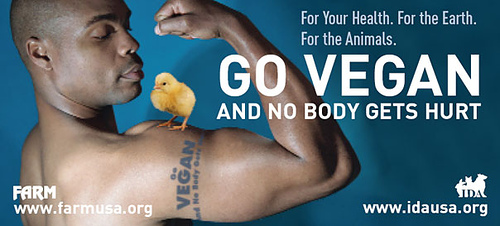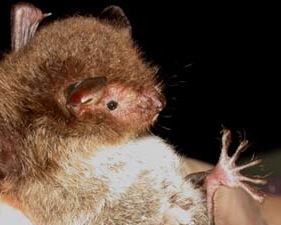Muscle memory to anyone who does sport/exercise will know and probably marvel at just how awesome muscle memory is. To me it is the eighth wonder of the world and so are plant-based proteins.
So let’s have a quick look at the ‘phenomenon of muscle memory’ (Staron et al 1991:637). It is widely known that after detraining for a period of time (even quite long ones), once you start retraining your muscles ‘remember’ the stress they endured from before and ‘grow’ back quickly to where they were when you stopped training. It is believed that a memory mechanism resides in the muscle fibres. Training your muscles increases muscle mass and force, stimulating tissues to multiply and to fuse with pre-existing fibres. This in turn supports the larger volume of cells, which are thousands of times larger than other cells in your body.
Studies show this could be as a result of both increased neural activity and/or muscle hypertrophy (from Greek ὑπέρ “excess” + τροφή “nourishment”). Hypertrophy is the increase in the volume of an organ or tissue due to the enlargement of its component cells. Brain and body work in a symbiotic relationship it seems. This is good news for all sports people (by sport I mean all of them including ballet, dance, tennis, Pilates, yoga etc.).
I know from experience what detraining feels like after having shoulder surgery in 2013 resulting from a training injury.

Rotator cuff surgery 2013
I’ve just started retraining and getting into the zone mentally as well as training with a hardcore weightlifter (Glen who looks great). I’m expecting to very quickly get back to full strength and fitness (and a 4-pack) and just to add to the joys of pushing through the pain barriers to a glorious body I’ve returned to ballet after a 25 year break. I’m counting therefore on muscle memory to help me get into all those core-strength positions.
I said earlier that hypertrophy means, “excess nourishment” in Greek. Let’s turn to the question of proteins to build muscle.
You can’t just lift weights or do sport as a standalone method to increase muscle strength or mass. Food and nourishment are also needed. I am vegan so getting enough quality protein is paramount in my everyday nutritional requirements. Plant-based proteins are amazing; many are more protein packed than meat, and most contain other nutrients not available in meat. Most of them contain less saturated and unsaturated fat and as long as you eat a variety of plant-based proteins you will get the essential amino acids you need (except blood of course). Plant-based proteins do not produce uric acid, which causes liver problems and means less work for the body to break down, thus putting less strain on the digestive system. There are many advantages in eating plant-based proteins over animal ones, far too many for me to list here so I’ve put a few links you can surf for yourself.
http://www.hsph.harvard.edu/nutritionsource/protein-full-story/
http://healthyeating.sfgate.com/types-beans-highest-amount-protein-6835.html
http://www.mindbodygreen.com/0-2433/5-Reasons-Why-You-Should-Eat-PlantBased-Protein.html
http://www.veganbodybuilding.com
http://www.bodybuilding.com/fun/mahler53.htm
http://www.vegansociety.com (UK)
http://www.americanvegan.org (USA)
In short, I eat plant-based proteins for many reasons, however as a seeker of all things logical here is my main reason.

My protein supps (suitable for vegans)
I want to eat primary plant-based proteins that are direct from the source of all life, the sun (thermal vents notwithstanding, thanks for pointing this out Duncan). I don’t want it as a secondary animal protein (rotting flesh that will be inside me) that is eaten and digested as plant-based proteins, then converted into meat based-protein. The animal is killed after suffering and moved around the planet; goodness only knows how old (or fresh) it is. In the UK in 2013 we had the scandal of horsemeat in foods labeled as beef. How disgusting. I for one love Black Beauty and Trigger, I don’t want to eat him or any other creature for that matter. Never mind the madness of growing more food to feed animals when there is starvation in the world [2].
I have to really work hard to make sure I eat enough food that contains plant-based proteins. I go to the gym and ballet classes to put myself through pain, but I love it. Eating food that hasn’t been murdered and pushing my body to become an athlete is what I love doing. I do take a protein supplement, pea protein (82% protein), hemp protein and I follow vegan bodybuilders as my inspiration. Being vegan is a life-long learning curve and I find out new vegan knowledge every day. Robert Cheeke, Billy Simmonds and Branden Brazier are all vegan bodybuilders to name just three. If you want to read my weblog on becoming a vegan click here.

Brendan Brazier

Billy Simmonds

Robert Cheeke
I do think (unproved hypotheses) that vegan muscle memory is probably better than that of meat and dairy eaters as our muscles will probably have less hormones, antibiotics, pus etc. that are found in meat and diary products (as long as you have a plant-based diet that is not GMO).
So if you are into building muscle or sport why don’t you try a vegan diet for a bit? (I wouldn’t cut out meat completely, I’d go to fish to start with and slowly cut out dairy and all meat flesh). If you do, make sure you research it and work out how much protein you need. My daily intake when I’m working out is 115 grams per day. How much do you need? According to Mark Tarnopolsky, M.D., Ph.D., who studies exercise and nutrition at McMaster University in Hamilton, Ontario, highly trained athletes thrive on 0.77 gram of daily protein per pound of body weight. That’s 139 grams for a 12.85 stone man (180-pound man) [3].
Also it is imperative that you take a vitamin B12 supplement as this is only stored in your body for up to 2 years after you give up dairy and meat. If you don’t your memory and other vital elements of your body will be detrimentally affected.
I’ll be honest with you, it’s hard work being vegan but the health and wellbeing benefits are amazing and along with the phenomenon of muscle memory I’m on my way to having a killer physique again.

References/Links:
[1] Staron RS, Leonardi MJ, Karapondo DL, Malicky ES, Falkel JE, Hagerman FC & Hikida RS. (1991). Strength and skeletal muscle adaptations in heavy-resistance-trained women after detraining and retraining. J Appl Physiol 70, 631-640
(THEIR REFERENCE LIST HAS LOADS OF INTERESTING ARTICLES TO READ ABOUT THIS)
[2] http://www.news.cornell.edu/stories/1997/08/us-could-feed-800-million-people-grain-livestock-eat
[3] http://www.menshealth.com/mhlists/guide-to-protein/recommended-protein-intake.php#ixzz32wCTEqOT






















